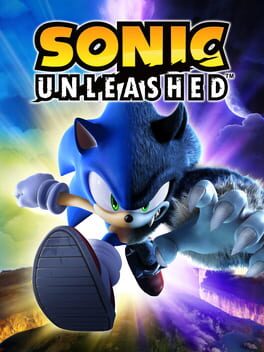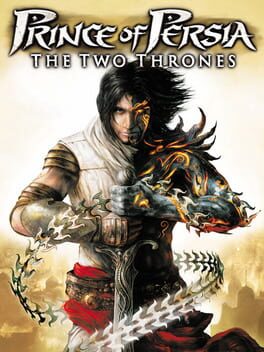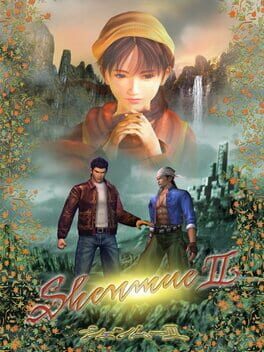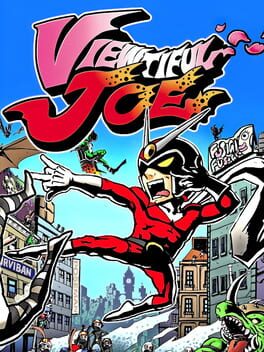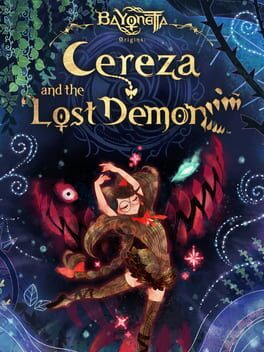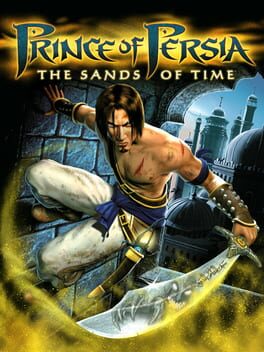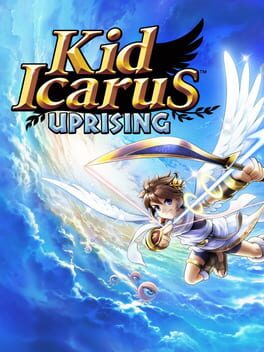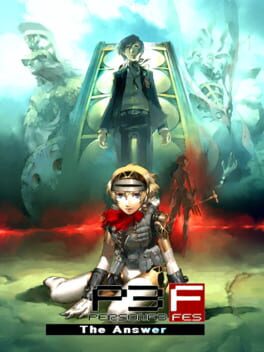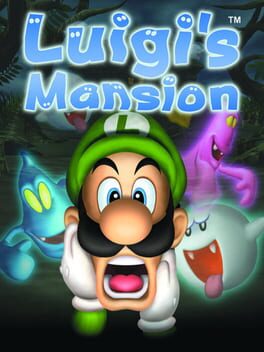ULF
2008
The Wii version is slick and polished, with no segment I could really point out for feeling cheap or being badly designed. Visually it looks really good for Wii too.
While the story and cutscenes are the same, the gameplay is entirely different and honestly with a handfull of better design choices to boot.
While there's no city hubs there's the gaia gate hubs with small puzzles to solve for more missions and goodies. No more mandatory pace breaking medal collecting for story progression, in this version you get them based on your stage rank, and then use them to explore more the gaia gates and get sidestuff.
The levelling up system only counts for the Werehog, and the Night Time stages has more emphasis on platforming, with elements and puzzle mechanics here that aren't even present in the hd version. Controls are fine and responsive although a bit slippery when dashing which can be a problem especially for when you initiate the dash by analog tilting especially for sections with tiny platforms as you easily tumble to your salt and misery.
While the 360 version had 15-20 minute night time stages, the Wii version splits that up for 4-5 sequent stages ranging from 4-8 minute length in general. each of the shorter werehog stages takes on some different layered designs and feels like actual proper levels.
Daytime stages are completely different and instead of having a nonstop gauge of boost you need to use one boost per press and time it well with the stage layout and your precision. I really appreciated the wii version not tossing out the sub boss robot every single stage as well. They're super fun, Holoska Daytime is easily one of my favourite sonic levels out there.
The absence of the Mazuri stages (aside from a bossfight) and Empire City being completely absent is a bit of a shame as well as not having explorable city hubs, there's at least the gaia hubs.
Let's just say I think they handled the final world a lot better on Wii as well as the final boss too.
It's honestly a lot to compare between the two versions, but there's also the point of respecting the games for their vastly fundamental differences, while Unleashed has the higher peaks it also had the lower lows, while Unwiished is just overall keeping itself at a very good high throughout.
While the story and cutscenes are the same, the gameplay is entirely different and honestly with a handfull of better design choices to boot.
While there's no city hubs there's the gaia gate hubs with small puzzles to solve for more missions and goodies. No more mandatory pace breaking medal collecting for story progression, in this version you get them based on your stage rank, and then use them to explore more the gaia gates and get sidestuff.
The levelling up system only counts for the Werehog, and the Night Time stages has more emphasis on platforming, with elements and puzzle mechanics here that aren't even present in the hd version. Controls are fine and responsive although a bit slippery when dashing which can be a problem especially for when you initiate the dash by analog tilting especially for sections with tiny platforms as you easily tumble to your salt and misery.
While the 360 version had 15-20 minute night time stages, the Wii version splits that up for 4-5 sequent stages ranging from 4-8 minute length in general. each of the shorter werehog stages takes on some different layered designs and feels like actual proper levels.
Daytime stages are completely different and instead of having a nonstop gauge of boost you need to use one boost per press and time it well with the stage layout and your precision. I really appreciated the wii version not tossing out the sub boss robot every single stage as well. They're super fun, Holoska Daytime is easily one of my favourite sonic levels out there.
The absence of the Mazuri stages (aside from a bossfight) and Empire City being completely absent is a bit of a shame as well as not having explorable city hubs, there's at least the gaia hubs.
Let's just say I think they handled the final world a lot better on Wii as well as the final boss too.
It's honestly a lot to compare between the two versions, but there's also the point of respecting the games for their vastly fundamental differences, while Unleashed has the higher peaks it also had the lower lows, while Unwiished is just overall keeping itself at a very good high throughout.
This game is a lot of fun and builds on everything Sands of Time initiated. Excellent platforming and combat with a much more open field for exploration.
It's darker and edgier, and only has a few small glimmers of the lighthearted tongue in cheek spirit as the first and third game, but that's also the point as the prince is stuck in his own self indulgent journey. In its own right it does stick out with some of its own personality banging out some cool metal tunes and nice dark color saturations that makes the game pop. Out of the three games I've always been digging Warrior Within's aestetical values the most.
The only reason I really pull this game down a notch is because it is rough around the edges, occasionally janky, has some bad bugs and a few softlock situations. I actually saved myself from a bad one right before the final boss...
So do yourself a favour and keep a few extra saves just in case.
It's darker and edgier, and only has a few small glimmers of the lighthearted tongue in cheek spirit as the first and third game, but that's also the point as the prince is stuck in his own self indulgent journey. In its own right it does stick out with some of its own personality banging out some cool metal tunes and nice dark color saturations that makes the game pop. Out of the three games I've always been digging Warrior Within's aestetical values the most.
The only reason I really pull this game down a notch is because it is rough around the edges, occasionally janky, has some bad bugs and a few softlock situations. I actually saved myself from a bad one right before the final boss...
So do yourself a favour and keep a few extra saves just in case.
Penny's Big Breakaway excels in constant speedy and momentum driven platforming through Penny's flexible yoyo abilities and awesome aerial mobility, seriously the midair controls is so perfect, even the most precise landings never felt unreasonable to pull off.
Each stage also has 3 scattered collectable coins and several challenges with differently timed objectives. The auto camera and overall flow of the game however didn't really add encouragment to stop on a dime to do scavenging, as well as the challenges were just not... fair at times with some extremely strict timers and trial and error wazo designs that even by the first levels felt almost immediately discouraging to deal with.
Personally by the time I decided to ignore the side objectives the more fun I had building up trick points and speeding through the courses.
PBB is a vibrant game with a lot of charm to it with each world carrying their own level gimmicks that never intrudes the game central mechanical flow, however while the game doesnt strive to go beyond its simplistic tube design the level aestetics blends together a bit much, and it honestly added some sense of monotony by the course of the game.
The soundtrack however is a bop that added some extra individual flair per world.
I overall enjoyed PBB and it is an easy revisit for its snappy main course, charm and awesome technical gameplay.
Each stage also has 3 scattered collectable coins and several challenges with differently timed objectives. The auto camera and overall flow of the game however didn't really add encouragment to stop on a dime to do scavenging, as well as the challenges were just not... fair at times with some extremely strict timers and trial and error wazo designs that even by the first levels felt almost immediately discouraging to deal with.
Personally by the time I decided to ignore the side objectives the more fun I had building up trick points and speeding through the courses.
PBB is a vibrant game with a lot of charm to it with each world carrying their own level gimmicks that never intrudes the game central mechanical flow, however while the game doesnt strive to go beyond its simplistic tube design the level aestetics blends together a bit much, and it honestly added some sense of monotony by the course of the game.
The soundtrack however is a bop that added some extra individual flair per world.
I overall enjoyed PBB and it is an easy revisit for its snappy main course, charm and awesome technical gameplay.
I wouldnt adore this trilogy so much if it weren't for this game.
Two Thrones paves the way to conclude the trilogy, while respecting both of its predecessors by assimilating what is best of both into its own final journey of retrospect and resolve.
Both Sands of Time and Warrior's Within's two opposing tones are mutually captured throughout this game, both gritty and lighthearted in ambience, strong writing and characterisations with banter dialogues and monologues harkening back to Sand of Time, while retaining that dark edge which reflects through the more isolated moments of the game.
Two Thrones progression is in similar fashion as The Sands of Time always directing itself forward to new areas with diverse environments through fantastic level design combining parkour platforming, combat and puzzlesolving into a balanced rythm that flows exceedingly well.
Apart from a few missable life upgrades and some minour jank, this game is one of a kind doing an excellent job in concluding the trilogy.
Two Thrones paves the way to conclude the trilogy, while respecting both of its predecessors by assimilating what is best of both into its own final journey of retrospect and resolve.
Both Sands of Time and Warrior's Within's two opposing tones are mutually captured throughout this game, both gritty and lighthearted in ambience, strong writing and characterisations with banter dialogues and monologues harkening back to Sand of Time, while retaining that dark edge which reflects through the more isolated moments of the game.
Two Thrones progression is in similar fashion as The Sands of Time always directing itself forward to new areas with diverse environments through fantastic level design combining parkour platforming, combat and puzzlesolving into a balanced rythm that flows exceedingly well.
Apart from a few missable life upgrades and some minour jank, this game is one of a kind doing an excellent job in concluding the trilogy.
2001
one of the most impressive games I've played to this day. the insane amount of voice work put in this game, not to mention how all the npcs have their own va's and design for the most part is just astounding. Each and every corner of this game is beautifully crafted. There's always something to discover in this game.
Shenmue 2 is grand and majestic with memorable story beats.
Shenmue 2 is grand and majestic with memorable story beats.
2003
Cereza and the Lost Demon sticks out with its own kind of charm as a companion piece to the main trilogy, more sincere and modest, but not without its bang of booms.
Being fundamentally split into both combat and puzzlesolving, both new innovations and elements gradually comes and goes with the intent to break the stale as the chapters walts you through the wondrous scenery of Avalon Forest.
It is a comfy and forgiving game, less bombastic than what you would expect from a Bayo game, save some spectacular bossfights sparingly placed past the slow ascent through the early chapters.
As it unfolds the puzzlesolving is oriented towards the new abilites you gain and whatever is new never fails to entertain.
Combat is fluid and very managable, extorting enemy weaknesses and pulling of finishers feels great as everything seams together in visual and melodic prowess.
By the pull of the curtains, the game wraps up with a deviated focus on its strong narration and awesome final bosses, and less so on setting the final deck for what puzzle elements the earlier chapters introduced.
In the end, I think Cereza and the Lost Demon is a stylish visual dazzle in execution, exuding of narrative charm and identity, comfortable to play despite keeping itself in restraint with its creative core ideas.
Being fundamentally split into both combat and puzzlesolving, both new innovations and elements gradually comes and goes with the intent to break the stale as the chapters walts you through the wondrous scenery of Avalon Forest.
It is a comfy and forgiving game, less bombastic than what you would expect from a Bayo game, save some spectacular bossfights sparingly placed past the slow ascent through the early chapters.
As it unfolds the puzzlesolving is oriented towards the new abilites you gain and whatever is new never fails to entertain.
Combat is fluid and very managable, extorting enemy weaknesses and pulling of finishers feels great as everything seams together in visual and melodic prowess.
By the pull of the curtains, the game wraps up with a deviated focus on its strong narration and awesome final bosses, and less so on setting the final deck for what puzzle elements the earlier chapters introduced.
In the end, I think Cereza and the Lost Demon is a stylish visual dazzle in execution, exuding of narrative charm and identity, comfortable to play despite keeping itself in restraint with its creative core ideas.
Fast and hardhitting enemies, constant projectiles and rare heart drops that always requires you to keep moving around while Link is having the traction of a wet diaper. Better be bringing yourself enough healing and magic potions or face the consequences.
A Link to the Past is both challenging and diverse with its otherwise well structured overworld of unique dungeons, sidequests and minigames. There's a fun and charmy adventure to be had if you can abide to its less forgiving nature.
A Link to the Past is both challenging and diverse with its otherwise well structured overworld of unique dungeons, sidequests and minigames. There's a fun and charmy adventure to be had if you can abide to its less forgiving nature.
A stylish & stellar acrobatic platformer tied together with fun puzzlesolving and combat with hands down some of the best camera controls out there. Aside from some repetitious enemy hordes going on and on and farah getting more in the way during combat than really contributing (the game is self aware of this and even pokes fun at it, but it still doesnt help the experience) . The rest of the game is absolutely flawless and plays like a dream.
2012
With vast steps from its predecessor, Uprising took a fearless leap onwards into 3D with its own bag of flair, while at the same time remaining faithful to the Icarus universes share of recurring elements.
Through a narration composed with hands down excellent writing and great voice actor performances the plot pivots unpredictably between the whimsical and surprisingly darker territories. although most of this is played for satire through banterings between our heroes and villains as background noise while playing the game, it's still very fun and well synced dialogues to what happens on screen as you play.
The unpredictable nature of Uprising also carries through the presentation, set pieces to hazards and enemy designs.
For every stage there are jaw drop moments of realisation and discoveries, with a good handful of laugh out moments for silly attention to details to splendours of soaring through space and below waters. It's simply a joyride throughout.
Every stage presents their own tune of aestetical values as you slice, dice and barrage enemies through a technical two segmented gameplay foundation. Mainly from the preluding and cinematic sky shooter parts into the more technical and semi platformy ground combat segments.
It is unfortunate that the biggest gamekeeper in Uprising is namely the controls that requires heavy hand coordinations for both moving and aiming around at the same time, in addition to absorbing everything happening on screen.
The control schemes asks a lot from the player, not to mention the durability of the 3ds analog as you need to flick from left to right, to constantly dash around or dodge enemy projectiles and the likes.
Once you get to grips with the controls it only gets better from there as you unlock better weapons and can adjust
the difficulty to your liking from playing it safe to harder difficulties to keep on unlocking better gears.
In addition to the main story there's a lot of collectables and different weapons to alter melee, range and movement speed. There's plenty of game optimising to play around with which adds up for great replay value.
Not to mention there's a multiplayer mode with arena combat and seperate modes, which to my delight were still active when I tried it out.
Whether you're soaring through the skies, or sweeping through the grounds. Uprising will light your path with its divine tongue in cheek energy and creativity.
Through a narration composed with hands down excellent writing and great voice actor performances the plot pivots unpredictably between the whimsical and surprisingly darker territories. although most of this is played for satire through banterings between our heroes and villains as background noise while playing the game, it's still very fun and well synced dialogues to what happens on screen as you play.
The unpredictable nature of Uprising also carries through the presentation, set pieces to hazards and enemy designs.
For every stage there are jaw drop moments of realisation and discoveries, with a good handful of laugh out moments for silly attention to details to splendours of soaring through space and below waters. It's simply a joyride throughout.
Every stage presents their own tune of aestetical values as you slice, dice and barrage enemies through a technical two segmented gameplay foundation. Mainly from the preluding and cinematic sky shooter parts into the more technical and semi platformy ground combat segments.
It is unfortunate that the biggest gamekeeper in Uprising is namely the controls that requires heavy hand coordinations for both moving and aiming around at the same time, in addition to absorbing everything happening on screen.
The control schemes asks a lot from the player, not to mention the durability of the 3ds analog as you need to flick from left to right, to constantly dash around or dodge enemy projectiles and the likes.
Once you get to grips with the controls it only gets better from there as you unlock better weapons and can adjust
the difficulty to your liking from playing it safe to harder difficulties to keep on unlocking better gears.
In addition to the main story there's a lot of collectables and different weapons to alter melee, range and movement speed. There's plenty of game optimising to play around with which adds up for great replay value.
Not to mention there's a multiplayer mode with arena combat and seperate modes, which to my delight were still active when I tried it out.
Whether you're soaring through the skies, or sweeping through the grounds. Uprising will light your path with its divine tongue in cheek energy and creativity.
2021
Metroid Dread takes it away with an outstanding sense of progression as you're again stuck on a new planet to explore through every nook and cranny. The area maps are logically tied together with enough open space to navigate and branch out through seperate routes more and also less optimally, while the main path is apparent enough with very little handholding.
Samus is speedy and nimble, a pure joy to navigate around with just like it was in Samus Returns for the 3DS.
Level design and fluidity aside, the environments of planet ZDR weren't really anything beyond the series usual attire, and some sub bosses were recycled just a little too much on the final stretch. The OST was certainly there and added the needed ambience and intensity, but compared to the rest of the series iconic pieces these compositions are my least favourites, still alright, just not very memorable.
Beyond it all, Dread's killer variations of enemy designs and bossfights is another force to be reckoned with and the narrative dropped my jaw to the floor a good couple of times with some of its directions, I really love how grand of a narrative leap Dread took tying in to the preceding games.
In the end apart from being a bit bland with its environmental tropes, Dread is simply amazing to play, it is both intuitive and challenging, beautiful in seamless motion, ultimately a structural masterpiece with great replayability.
Samus is speedy and nimble, a pure joy to navigate around with just like it was in Samus Returns for the 3DS.
Level design and fluidity aside, the environments of planet ZDR weren't really anything beyond the series usual attire, and some sub bosses were recycled just a little too much on the final stretch. The OST was certainly there and added the needed ambience and intensity, but compared to the rest of the series iconic pieces these compositions are my least favourites, still alright, just not very memorable.
Beyond it all, Dread's killer variations of enemy designs and bossfights is another force to be reckoned with and the narrative dropped my jaw to the floor a good couple of times with some of its directions, I really love how grand of a narrative leap Dread took tying in to the preceding games.
In the end apart from being a bit bland with its environmental tropes, Dread is simply amazing to play, it is both intuitive and challenging, beautiful in seamless motion, ultimately a structural masterpiece with great replayability.
The Answer means to bring closure to some of the remaining mysteries from the main story and piles up its gameplay through lots more dungeon crawling alongside its share of brutal bossfights.
Aigis is now your wild card persona user, but unlike in the journey there are no social links and also no compendium leaving fusing a lot more restrictive and more grindy.
In addition the enemy formations almost always have scattered weaknesses so that you have to utilise the ai commands and row orders excessively, this is a pretty good premise for more tactical usage of your party members, but there is one major catch. Bossfights also have the same formations of enemies with varied elemental weaknesses, however each and every fucking one has evasion skills set to them, which means you need to pray you have some luck hitting or you WILL more than likely die. Of course, as long as you grind...you will eventually be fine.
If you want to fight a bossfight at full capacity make sure you conserve for the earlier 8 floors or so. Yes there are no warp-points before the boss, however there is at least a savepoint.
Outside of some rather nice flashbacks, I didn't really like the story in the Answer and I honestly disregard its direction on its latter course with some of the character's motivations as well as simply completely shattering the impact of the Journey's ending.
But hey, at least the new music tracks were pretty good, and it was nice to hear more dialogues from the old va cast.
Aigis is now your wild card persona user, but unlike in the journey there are no social links and also no compendium leaving fusing a lot more restrictive and more grindy.
In addition the enemy formations almost always have scattered weaknesses so that you have to utilise the ai commands and row orders excessively, this is a pretty good premise for more tactical usage of your party members, but there is one major catch. Bossfights also have the same formations of enemies with varied elemental weaknesses, however each and every fucking one has evasion skills set to them, which means you need to pray you have some luck hitting or you WILL more than likely die. Of course, as long as you grind...you will eventually be fine.
If you want to fight a bossfight at full capacity make sure you conserve for the earlier 8 floors or so. Yes there are no warp-points before the boss, however there is at least a savepoint.
Outside of some rather nice flashbacks, I didn't really like the story in the Answer and I honestly disregard its direction on its latter course with some of the character's motivations as well as simply completely shattering the impact of the Journey's ending.
But hey, at least the new music tracks were pretty good, and it was nice to hear more dialogues from the old va cast.
2001
No idea how Nintendo managed to conjure this up as a launch title or how they got the idea to merge a Ghost Busters conceptual game starring Luigi, a real oddity title, but it goes to show how new core ideas and innovations can last and only get better with time.
Still plays wonderfully and has that awesome early gamecube era visual charm with great lightning effects and ambience.
Very short and sweet, but always keeps you going towards new sections without holding back with its variety. Every room is a treat of either puzzles, ghost gauntlets, throwbacks, easters and wonders.
A classic and original entry from a very experimental period.
Still plays wonderfully and has that awesome early gamecube era visual charm with great lightning effects and ambience.
Very short and sweet, but always keeps you going towards new sections without holding back with its variety. Every room is a treat of either puzzles, ghost gauntlets, throwbacks, easters and wonders.
A classic and original entry from a very experimental period.
2019
Shenmue III spans two slow chapters past Ryu's journey through Guilin, with sights and characters to behold constricted by a more modest budget and story direction.
The Bailu chapter hits it fine and plays it slow on the mysteries from the series while adding on a couple more, the chemistry between Ryu and Shenhua is fun and there is a lot of different dialogues to dig up even through several playthroughs, meanwhile Niawou is a majour pitstop doing very little to progress the story, even leaving shenhua almost completely for dust.
Sadly towards the end of the game, the budget final strings starts to show, as there's so much padding through forced backtracking and longwinded requisites right before the finale that almost sinks the ship and when at last the cutscenes while wonderfully displayed appears, go by so fast before the sudden - the story goes on- shamelessly dances on the screen cue credits.
There was intended to be one more area in the game for the climax which apparently was cut, and sadly it does leave a stain on the game,
hopefully if the 4th game ever comes out Shenmue III might get more recognised for being the middle bridge that it is, into whatever Yu Suzuki has in store for his next chapters..
For what it is now, Shenmue III is for its better half a faithful adaption of the prior entries formulaic gameplay despite being more narrow with its line of progression.
Both Bailu and Niawou are beautifully crafted locales with lots to see and a few decent minigames.
The places you visit are filled to the brim with details, throwbacks and fun nudges to all the backers which is definitely the strongest aspect of Shenmue III.
Throughout Shenmue III there are namedrops, models, quotes and pictures to be found of backers that gives the game a very unique touch of care for its community.
It is in benefit for its slow nature a very relaxing game to play with excellent ambience and a great soundtrack mostly remixing or recomposed tracks of songs from prior entries while the few new ones are absolutely earmelting. Helping out locales with sidequests, going fishing, picking up herbs all over the place, searching for hidden choobus or other side activities are all comfort addictions good for weary old bones.
Shenmue III does retain the same spirit as its predecessors, following the core formula faithfully to a tee (outside of the combat), and while budget constraints definitely rears its ugly head, there's still good moments of care and detail within the game with fun and heartwarming discoveries to be made. Just don't expect much more than a stretched out resort trip.
The Bailu chapter hits it fine and plays it slow on the mysteries from the series while adding on a couple more, the chemistry between Ryu and Shenhua is fun and there is a lot of different dialogues to dig up even through several playthroughs, meanwhile Niawou is a majour pitstop doing very little to progress the story, even leaving shenhua almost completely for dust.
Sadly towards the end of the game, the budget final strings starts to show, as there's so much padding through forced backtracking and longwinded requisites right before the finale that almost sinks the ship and when at last the cutscenes while wonderfully displayed appears, go by so fast before the sudden - the story goes on- shamelessly dances on the screen cue credits.
There was intended to be one more area in the game for the climax which apparently was cut, and sadly it does leave a stain on the game,
hopefully if the 4th game ever comes out Shenmue III might get more recognised for being the middle bridge that it is, into whatever Yu Suzuki has in store for his next chapters..
For what it is now, Shenmue III is for its better half a faithful adaption of the prior entries formulaic gameplay despite being more narrow with its line of progression.
Both Bailu and Niawou are beautifully crafted locales with lots to see and a few decent minigames.
The places you visit are filled to the brim with details, throwbacks and fun nudges to all the backers which is definitely the strongest aspect of Shenmue III.
Throughout Shenmue III there are namedrops, models, quotes and pictures to be found of backers that gives the game a very unique touch of care for its community.
It is in benefit for its slow nature a very relaxing game to play with excellent ambience and a great soundtrack mostly remixing or recomposed tracks of songs from prior entries while the few new ones are absolutely earmelting. Helping out locales with sidequests, going fishing, picking up herbs all over the place, searching for hidden choobus or other side activities are all comfort addictions good for weary old bones.
Shenmue III does retain the same spirit as its predecessors, following the core formula faithfully to a tee (outside of the combat), and while budget constraints definitely rears its ugly head, there's still good moments of care and detail within the game with fun and heartwarming discoveries to be made. Just don't expect much more than a stretched out resort trip.
